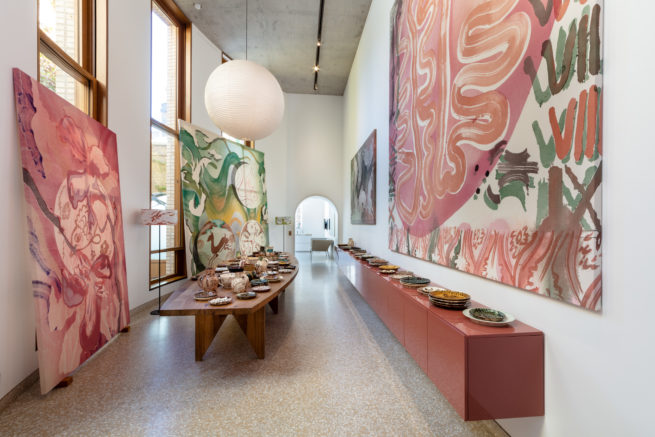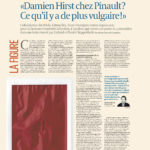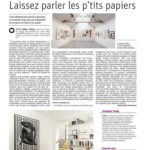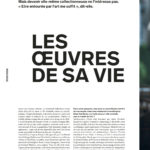↝
AP Office is the professional continuation of Anne Pontégnie’s experience of many years as curator and art critic. Pontégnie created AP Office to answer the need of a more integrated conversation between actors in the field of contemporary art. The office assembles a strong, international network of specialists, ranging from theoreticians to technicians, from artists to curators.
Anne Pontégnie is curator-at-large for Le Consortium (Dijon) and curator for the Cranford Collection (London). Prior to that, she was chief curator at Wiels (Brussels), an institution she founded together with Dirk Snauwaert. She curated numerous solo exhibitions with artists, such as Mike Kelley, Daan Van Golden, Kelley Walker, Edith Dekyndt, Roe Ethridge and Mark Leckey. She has expertise in different exhibition formats as co-producer or artistic director, such as the Biennale de Lyon (2003), the Printemps de Septembre (Toulouse, 2011) and large exhibition projects within the context of Nancy 2005 and Marseille-Provence 2013. Anne Pontégnie has participated in a number of alternative productions, such as the Nouveaux Commanditaires and Microproductions. She has written numerous articles and essays for renowned international art magazines and has edited catalogues for Christopher Wool, Kelley Walker, Daan Van Golden, e.a.
↝
Based on a long institutional experience, AP Office offers the conceptual and technical resources to conceive and implement contemporary art exhibitions. We understand exhibitions as a precise visual and spatial language that translates unique and engaged perspectives on contemporary art and its development. In this process an emphasis is placed on in-depth dialogue with artists and producers. Writing is understood as a complementary form of curating, which clarifies what is at stake in the artwork. AP Office actively seeks to collaborate with a new generation of writers, artists and curators who challenge and revitalise formats of exhibition-making and publishing.
AP Office assists a selected number of private and corporate clients to clarify the vision and ambition of their collections. We offer articulate, independent support to manage collections on a practical and conceptual level.
With primary knowledge of international artists, gallerists and institutions, the office can precisely identify larger trends that structure the field of contemporary art and provide the collector access to key artworks. Our aim is to build a specific, custom-made and long-term strategy that progressively enables each client to develop an autonomous and sustainable relationship to collecting. The team brings an informed perspective that includes the history of art and an overview of collecting’s broader meaning within contemporary society.
The service includes:
- Strategic advice
- Collection audits
- Consignment negotiations
- Arrangement of museum loans and collaboration
- Connection to specialists in major auction houses
- Liaison with legal advisors
- The logistical management of a collection: storage, databasing, conservation, transport, customs, insurance
- Recognition and promotion of the collection: including website, catalogues, installations, special projects, press and educational visits
AP Office is regularly approached by institutions or companies that want to integrate contemporary art into their activities but lack access and understanding of the field. The sphere of consultancy is very varied: working actively as mediator, we enjoy the challenge of connecting with diverse clients, helping each to build and implement new tools to define and increase their identity in the field of contemporary art.
Positioned at the centre of a network of experts Anne Pontégnie has previously led ambitious public commissions, including Christopher Wool’s celebrated stained-glass windows for an eleventh-century church priory in the city of La Charité-sur-Loire, France. Building on this experience AP Office brings the right people together to challenge established thinking and drive transformation in the realm of art commissions. Interfacing between artists and patrons, the office follows a process that starts with identifying the request and ends in the production of unique artwork. Often understood as something from the past or reserved for public spaces, the commission of distinctive works by living artists also has a role in establishing significant private collections. With clear objectives, the commissioning process is transformative for both the artist and the patron. It involves a different type of engagement and enjoyment from the acquisition of unique artworks, allowing in-depth dialogue between partners, and rewarding research into craft and production techniques. Private commissions enable a collector to inscribe their drive in a deeper timeframe.
↝ LATEST






















